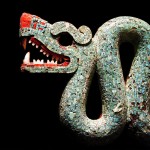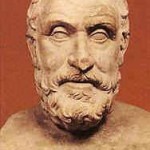
Many philosophies and wisdom traditions have independently come to realize that anguish and emotional suffering is caused by our attachments. Buddhism is perhaps the best known, but Taoism is closely related in this, and many other philosophies touch on it as well. Some philosophies approach the matter by talking about fear, or greed, or false judgments about which things are necessary or beneficial; but these concepts tend to boil down to attachment.
Attachment and non-attachment can be difficult concepts because they are incredibly nuanced. Without a subtle understanding, it can be easy to mistake this bit of wisdom. We might wonder how a person can even function without any desires or preferences. Stoicism makes a distinction between “wish” and “desire”, each with very specific technical definitions; each not being merely a matter of intensity, but instead arising from different kinds of judgments and impulses, and having significantly different effects on our well-being. Translations of Eastern philosophy sometimes refers to ‘unhealthy clinging’ and the like, to help make the distinction.
Basically, we become attached to things, people, and conditions when we imagine them to be permanent entities, and we place a value judgment on them such that we cannot be happy in life without them. This kind of attachment can sneak up on us, and we don’t realize it until it’s too late, the conditions change, and we are devastated. Or, perhaps conditions have not even changed, but we suffer because of a constant fear of losing that to which we have become attached.
This is a vicious cycle of desire that never fully satisfies and results in a life of anguish – regardless of what degree of things or people we accumulate. Yet, for many, this is simply “how life is”. They cannot imagine what it might be like to be liberated from such attachments without being some kind of robot or without having a drab emotionless life.
To the contrary, a life with less attachment can be a life of greater joy, equanimity, and peace. We can still enjoy people, things, and situations but we do so in a different manner, from a different perspective. This kind of joy is an appreciation that is more like lying in a soothing river, enjoying the water flowing around us. At all times the water is changing and flowing; parts of it passing away and new parts coming by. Yet, we do not cling to it, trying to collect it all up in our hands. This admittedly vague simile may help to illustrate a little of what the emotional experience of appreciation, love, and enjoyment without attachment is like.
But to achieve this kind of state requires a ‘rewiring’ of our outlook, from the ground up. This cannot be accomplished by reading an article, but it begins with certain basic information. The following are some means by which we can begin the rewiring…
Understanding the Aggregate Self
For one, our understanding of our ‘self’ (or ego) is essential. We are born into an incredibly ego-driven state and we often do not move much beyond that; “All through the day, I – me – mine” as George Harrison sang. But what is this “I” we so worshipfully tend to? I like to use the term “the aggregate self” but in Buddhism it’s often referred to as “no self”. This is the realization that there isn’t some permanent being that has emotions, that has thoughts, that has memories, impulses, sensations, etc. Rather, the self is a system of all these aggregates working together in an ever-changing matrix. Thus, the self is an abstraction.
This may seem rather academic or abstract at first, but deep perception and intuitive understanding of this and its implications begin to change a person’s perspective over time, with effort. We begin to realize that the urges we feel are not “us”, but a mechanism that evolved for its own purposes. And, more importantly, that these urges include insidious desires to protect the ego and its sense of self preservation. But that rational/moral higher self needn’t be a slave to those impulses. These kinds of thoughts matter to our focus and our experience in life.
Perception of Time
Another perspective-shifting concept is the way we think about time and the timescale of our existence. This may seem contradictory, but in one sense we need to have ‘big mind’, learning to see all of past, present, and future as one grand tapestry. And, on the other hand, we need to learn to live in the present moment.
How these two work together comes from a deeper understanding of each. Living in the present moment doesn’t mean we don’t plan for the future or benefit from the past. But it means that we maintain awareness of our present state so as to fully get the most out of our life experience, and so that we aren’t needlessly distressing over the past or fretting about the future. These ruminations and spinning of wheels are a great source of suffering, and not necessary to planning within needs.
How, then, can we maintain this hypothetical ‘God’s-eye view’ of time while being present in the moment? When we come to acceptance of the unfolding of events according to natural law, we hand over those things which we never had control over to begin with. We learn to even see the beauty of that tapestry. Thus, a trust is developed. With the rest of Nature left to do what only it can do, we are now free to focus on what we do control, our present choices. Ignatian Christians would say “let go and let God” but even naturalists without a belief in such a personal being benefit greatly by realizing what is in their control and leaving the rest up to the Logos.
Conceiving Impermanence and Emptiness
A deep acceptance of the impermanent nature of the universe is essential to this rewiring. More than acceptance, we can come to see the majesty of such a grand flux and understand that everything we appreciate and value cannot exist without it, for without constant change, all you have is either complete chaos or complete order – both lifelessness. As Chuang-Tzu said, “And surely that which is such a kind arbiter of my life is the best arbiter of my death.”
Emptiness is a translation of a Buddhist concept that basically identifies all of the typical things we give labels to, form opinions about, and have attachments to, are basically abstractions. This is not to deny the reality of an objective universe, but rather to say things aren’t what they seem. As naturalists, we realize that the choice to place a label on some particular temporary arrangement of atoms is a convenience of our own choosing, according to a brain that was evolved to do so. The implications of this are profound and when we internalize them, our perspective inevitably begins to shift.
***
The real challenge is in the continued application of practices that help instill the above concepts into our natural way of being, thinking, and responding. One of the more basic practices is constantly reminding ourselves of these teachings and more deeply exploring them, through continued learning and journaling to ourselves about how they apply to situations in our everyday lives. Marcus Aurelius’ Meditations is a good example of a book written to himself, with constant reminders of wisdom he found helpful.
Another crucial element is the cultivation of greater powers of attention, focus, and mindfulness; primarily achieved through a regular practice of meditation. Imbedding the truths we know intellectually – into a level whereby they can overcome our less sophisticated but genetically hardwired impulses – requires a capacity of mindfulness as impulses arise in real life situations and it is not typical for a person to possess such mindfulness without effort to improve it.
Engaging in various rituals, large and small, private and public, can help to generate experiences which produce ‘ah-ha’ moments that bring teachings to life and utilize multisensory inputs that intimately involve more aspects of our minds. Thus is the distinction between knowledge and deeper comprehension. Each individual will react more or less effectively to different styles and traditions, given their own personality, preferences, and past experiences. Exploring this can be part of the fun of a spiritual practice.
In our member educational archives, we have an essay on Negative Visualization, an advanced Stoic practice I wouldn’t recommend for beginners, but which can be a powerful way to gauge our progress in non-attachment. But aside from this method, the best technique is persistence. Over time, one should begin to notice changes that contribute positively to life experience. If not, then guidance may be needed to find effective techniques, since all beings are different.
Here are some excellent external articles on non-attachment that can also be helpful:
http://zenhabits.net/zen-attachment/
http://www.wikihow.com/Practice-Non-Attachment
As is always the case with the written word, this article and the above are merely intellectual concepts. They are also a poor substitute for the more detailed traditions to which the above refers. But, hopefully, this may serve as a stimulant for further exploration!
Subscribe to The Spiritual Naturalist Society
Learn about Membership in the Spiritual Naturalist Society
__________
The Spiritual Naturalist Society works to spread awareness of spiritual naturalism as a way of life, develop its thought and practice, and help bring together like-minded practitioners in fellowship.
__________
Written by DT Strain.













